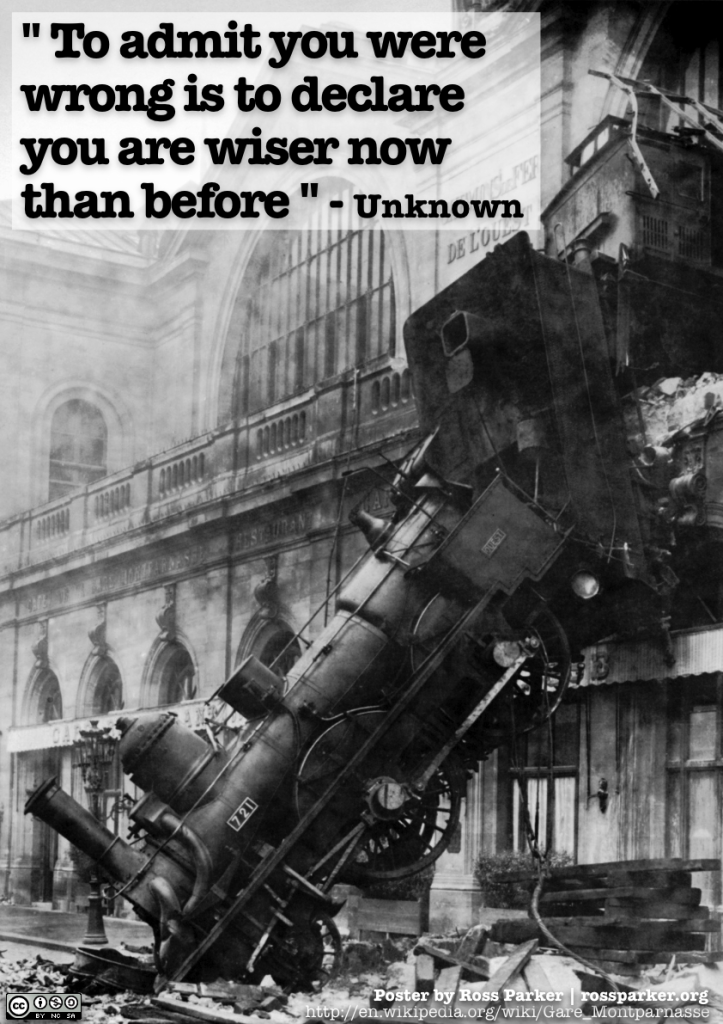 What Facebook, Twitter, Tinder, Instagram, and Internet Porn Are Doing to America’s Teenage Girls
What Facebook, Twitter, Tinder, Instagram, and Internet Porn Are Doing to America’s Teenage Girls
This is an abridged version of the full article from Vanity Fair. It has been prepared for educational use with students in lower secondary school (ages 11-14). Inserted at times are (hopefully provocative, discussion-inducing) questions for consideration by teachers and students. Some educators may find this material too risqué or difficult to approach, and in some places teachers may face strong pressure to not discuss such material. However, if teachers are not tackling such issues, then who is?
This year, 81 percent of Internet-using teenagers in America reported that they are active on social-networking sites, more than ever before. Facebook, Twitter, Instagram, and new dating apps like Tinder, Grindr, and Blendr have increasingly become key players in social interactions, both online and IRL (in real life). Combined with unprecedented easy access to the unreal world of Internet porn, the result is a situation that has drastically affected gender roles for young people. Speaking to a variety of teenaged boys and girls across the country, Nancy Jo Sales uncovers a world where boys are taught they have the right to expect everything from social submission to outright sex from their female peers. What is this doing to America’s young women?
Questions: To what extent is this an American phenomenon? If social networking is less popular where you are, why? And how long, if ever, until things change?
The Tinder Guy
She wanted it to be like the scene in the Lana Del Rey video for “Blue Jeans”—“hot and slow and epic.” The scene where strangers meet and fall into an easy intimacy, making love in a pool—“and they look so hot and it’s just, like, totally epic.” A boy at her school—she didn’t want to talk about him now; he’d broken her heart; but “like, whatever.” She’d “deleted him” from her phone. “I was stalking him too much, seeing him doing fun things on Instagram, and it hurt.”
They’d been instant-messaging on Facebook, and one night he told her he loved her. And then “I found out he was talking to, like, four other girls.” And now she wanted to do something to get over it, maybe to get back at him. “I mean, I should have known. All men are basically whores.” When he didn’t turn out to be her “true love”—“like Bella and Edward, or Bella and Jacob, you know?”—she decided she had to “lose it to someone,” so why not with someone she would never have to see again? And yet, she hoped it would somehow be like the Lana Del Rey song. “I will love you till the end of time,” it goes.
The guy she was supposed to meet that day—the guy from Tinder, the dating app kids were using to hook up—“I know, like, five guys who’ve done it; girls use it too, but they pretend like they don’t”—he was cute and had tattoos on his arms. He looked “James Franco–ish,” but younger. On Tinder you could meet people in your age group. She was 16; he was 17.
Alone in her room, the night before, reading her friends’ Twitter feeds and watching YouTube videos (Selena Gomez and “baby animals being cute”), she’d started feeling lonely, restless, and bored. “Sometimes I just want to talk to a guy so bad.” So she downloaded the app and started swiping through the pictures of boys in her area. She “hearted” his picture, and within a few minutes he had hearted hers, and then they were instantly texting.
“Ur hot,” he wrote. “U wanna meet?”
“When?”
They arranged to rendezvous at a shopping mall in Los Angeles not far from the neighborhood where they lived. “Of course it was going to be a public place. And if it turned out he was really some gross old man, I’d just run away.” But there he was, standing by his car, looking almost like his picture. . . . Almost. There was something different about his face—it was “squishier. Like, he was almost fat.” But now here they were, and she didn’t know quite how to get out of it.
He smiled and kissed her on the cheek. He smelled of Axe Body Spray. She was sorry she’d spent so much time getting ready for this. “I even waxed,” she said. He wanted her to get in his car, but she knew she shouldn’t. They started walking around the mall, “talking about nothing, nothing. It was awkward, totally weird.” He asked if she wanted to sit down, but there was nowhere to sit except in restaurants, so they wound up going inside a Pottery Barn and making out on a couch. Later she posted something on her Tumblr blog about the difficulty of finding love.
Wheeling In The Bitches
“Gotta wheel the bitches in. Gotta wheel the bitches in,” said the teenage boy on a city bus in New York. “Nowadays you can do it so easy. There are so many apps and shit that just, like, hand you the girls. They don’t even know that’s what they’re doing, but really they’re just giving teenagers ways to have sex.”
This year, 81 percent of Internet-using teenagers in America reported that they’re active on social-networking sites, one of which is Tinder, a mobile dating app that teens use to hook up.
Questions: Were the girl and boy in the above stories looking for the same thing, or something different? How are boys and girls depicted differently? In your experience, is this a realistic representation of males and females?
Sex, Lies & Social Media
If you’re between 8 and 18, you spend more than 11 hours a day plugged into an electronic device. The average American teen now spends nearly every waking moment on a smart phone or computer or watching TV. This seismic shift in how kids spend their time is having a profound effect on the way they make friends, the way they date, and their introduction to the world of sex.
Kids have always been interested in sex, of course; but there have never been more ways for them to express that to one another, at any moment of the day, no matter where they are. They don’t even have to be together, and often they are not. “You can be sitting in class getting a boner ’cause some girl is texting you” said a boy in L.A. “It’s kind of distracting.”
As quickly as new social media appears, teens seem to find ways to use it to have sex, often sex devoid of even any pretense of emotional intimacy. There’s sexting, and there’s Snapchat, where teenagers share pictures of their bodies or body parts; on Skype, sometimes they strip for each other or masturbate together. On Omegle, they can talk to strangers, and sometimes the talk turns sexual. And then there is Tinder, where kids can meet each other on their phones. “It’s like Grindr used to be for gay guys, but now kids are doing it,” said a girl in L.A. “No one cares about anything but how you look.”
Questions: Is the sentiment expressed in the line “No one cares about anything but how you look.” heightened by social networking? Is it a good thing?
“We don’t date; we just hook up,” another girl in L.A. told me. “Even people who get in a relationship, it usually starts with a hookup.” Which can mean anything from making out to having sex. “When you have sex with a guy, they want it to be like a porno,” said a 19-year-old girl in New York.
Questions: What happens when young boys learn about sex predominantly through online pornography? Consider the idea that “learning about sex from porn is like learning history from Hollywood movies”.
The Girls At The Grove
“Social media is destroying our lives,” said the girl at the Grove.
“So why don’t you go off it?” I asked.
“Because then we would have no life,” said her friend.
The girls had been celebrating a birthday at the busy L.A. mall, and now they were on their way home; they carried bags of leftovers from the Cheesecake Factory. There were four of them: Melissa, Zoe, Padma, and Greta. They stopped to sit down and talk awhile at an outdoor table.
They were pretty girls with long straight hair—two blonde, two brunette, all aged 16. They wore sleeveless summer dresses and looked fresh and sweet. Greta, they said, was famous—or Instafamous, having thousands of followers on Instagram. She showed me a gallery of her Instapics; some were of her dog and some were of Greta pouting and wearing “the duck face.” Some of her followers, she said, were “random dudes in Italy and Arabia.”
Melissa said, “I have Facebook, a YouTube account. I’ve used Twitter, Instagram, Snapchat, Vine . . . ”
“Path, Skype,” Zoe said.
“Tumblr,” said Padma.
“I have a Twitter, but I don’t use it except for stalking other people,” said Greta.
They all laughed knowingly.
“I think everyone does it,” Greta said. “Everyone looks through other people’s profiles, but especially being teenage girls, we look at the profiles of the males we find attractive and we stalk the females the males find attractive.”
“It’s a way to get to know them without the awkward ‘Oh, what do you like to do?’ You already know,” said Padma.
“You can know their likes and dislikes,” Greta said. “‘Oh, they like this band.’ So you can, like, casually wear that band’s T-shirt and have them, like, fall in love with you or something. Or you can be like, ‘Oh, they listen to that music? Ew. Go away.’”
I asked them how they knew when a boy liked them.
“When a boy likes your [Facebook] profile pic or almost anything you post, it means that they’re stalking you, too. Which means they have interest in you,” said Zoe.
I asked them how they made the transition from social-media interaction to real-world interaction.
They blinked.
Questions: Does it matter if social skills online do not transfer to the real world? Are real world social skills still relevant?
I asked if they had boyfriends.
“There’s this boy Seth,” said Greta, “and when he liked my profile picture, I knew it was like, ‘Hey, ’sup, you cute.’ Then we held hands at a party. We were cute. But the one thing I didn’t like about him was he didn’t follow me back on Instagram. Social media causes soooooo much anxiety.”
They all agreed on that.
“The thing with social media is, if a guy doesn’t respond to you or doesn’t, like, stalk you back, then you’re gonna feel rejected,” said Melissa.
“And rejection hurts,” said Padma.
“And then you’re gonna go, like, look for another person to fill that void and you’re gonna move on to stalking someone else,” Melissa said.
“That’s how men become such whores,” said Greta.
“Guys actually take the Facebook-talking situation way too far,” meaning sexually, said Zoe.
They were nodding their heads.
“Like, when guys start a Facebook thing, they want too much,” said Padma. “They want to get some. They try with different girls to see who would give more of themselves.”
“It leads to major man-whoring,” Greta said.
“They’re definitely more forward to us online than in person,” said Zoe. “Because they’re not saying it to our faces.”
“This guy Seth, who is normally timid in real life,” said Greta, “sends girls messages asking for nudes.”
Questions: Why are people less inhibited online? To what degree should our online behaviour match our real world behaviour? Should we tolerate people who are too forward online?
“My friend, she was VC-ing,” or video chatting, “this guy she was kind of dating,” Melissa said. “He sent so many nudes to her, but she wasn’t trusting that he wouldn’t show the pictures to other people. So she Skyped him and showed him nudes that way. He took a screenshot without her knowing it. He sent it to so many people and the entire baseball team. She was whispered about and called names. It’s never gone away. He still has it and won’t delete it.”
Questions: Will those photos ever go away? Is there any way to share such private pictures safely online? Will someone you trust today be trustworthy tomorrow?
I asked if they knew girls who posted provocative pictures of themselves. They all said yes.
“More provocative equals more likes,” said Greta.
“It attracts more guys and then it makes other girls think about doing it just for the attention. They’re attention whores,” said Padma, frowning.
“My father thinks all my photos are provocative,” Greta mused.
“I think some girls post slutty pictures of themselves to show guys the side to them that guys want to see,” said Zoe. “It’s annoying.”
“Girls call them sluts. Boys call it hot,” said Padma.
Questions: How far are you willing to go to get attention online? At what point are you going too far in terms of what you share and how you portray yourself?
Mirror, Mirror
In the video for ”We Can’t Stop,“ Miley Cyrus writhes around on a bed, sticking her ass up in the air. She grinds her ass into the crotch of a woman twerking. She writhes around in an empty bathtub, sticking her ass in the air some more. She appears at the V.M.A.’s twerking into the crotch of Robin Thicke, causing an international sensation.
In the video for ”Summer Fling,“ Willow Smith stares at the nipple of a teenage boy while offering him her phone number. Willow’s 12. She sings about having a summer fling: “It’s just a couple nights, but we do it anyway.” A boy shoots water into a pool party at which Willow and her bikini-clad friends jump on a trampoline, spreading their legs.
“Of course girls want to emulate this stuff,” Kim Goldman said one afternoon at her home. Goldman is the director of the Santa Clarita Valley Youth Project, a counseling service for teens. “Girls talk about feeling like they have to be like what they see on TV,” she said. “They talk about body-image issues and not having any role models. They all want to be like the Kardashians. Kendall Jenner posts bikini shots when she’s 16 and gets 10,000 likes, and girls see that’s what you do to get attention.”
“We’re seeing depression, anxiety, feelings of isolation,” said Goldman. “I think social media is contributing to these things. We have kids who’ve had sex with people they meet on Chat Roulette. At one of the junior highs we work with, we found out there were a few kids engaging in an online orgy. They all signed into a video chat room.” One of their parents walked in on it. “Sex is everywhere. Everything is sexualized.”
Questions: To what extent do students feel that they are influenced by popular culture role models? Do students understand that fame does not equal happiness?
Selfies
“I first started seeing people doing selfies in sixth grade,” said Emily, a senior at a private school in L.A. “Back then everybody was on MySpace. In sixth grade everybody started getting phones and they started posting pictures of themselves, and it was weird, ’cause, like, a lot of the pictures were supposed to look sexy and they had the duck face and we were all, like, 11.”
“Guys do selfies, too,” said Alexandra, a girl at a public high school in L.A. “They post pictures of themselves smoking, like, ‘Look how boss I am, look how gangster.’ They think that makes them hot. If a guy posts a picture in his boxer shorts, people say that’s funny, but if a girl does it, they say she’s a slut. It’s a double standard, but girls still do it ’cause it gets them more likes on Facebook.”
“My little cousin, she’s 13, and she posts such inappropriate pictures on Instagram, and boys post sexual comments, and she’s like, ‘Thank you,’” said Marley, a New York public-school girl. “It’s child pornography, and everyone’s looking at it on their iPhones in the cafeteria.”
Porn & Feminism
Jill Bauer and Ronna Gradus are the co-directors of Sexy Baby (2012), a documentary about girls and women in the age of porn. They went on a research mission to a porn convention in Miami where “they were selling stripper poles to college girls and housewives,” said Bauer. “There were so many mainstream women idolizing the porn stars and running after them to take pictures, and we were like, ‘Whoa, this exists?’”.
“We saw these girls embracing this idea that ‘If I want to be like a porn star, it’s so liberating,’” Gradus said. “We asked, ‘What is this shift in our sexual attitudes, and how do we define this?’ I guess the common thread we saw that is creating this is technology.
“Technology being so available made every girl or woman capable of being a porn star, or thinking they’re a porn star,” said Gradus.
Porn is more available now than at any time in history—especially to kids. Ninety-three percent of boys and 62 percent of girls have seen Internet porn before they turn 18, according to a 2008 study in CyberPsychology & Behavior. Seventy percent of boys have spent more than 30 minutes looking at porn, as have 23 percent of girls. Eighty-three percent of boys and 57 percent of girls have seen group sex online. Eighteen percent of boys and 10 percent of girls have seen rape or sexual violence.
“When it comes to children, there is really nothing to argue about,” Alliston went on. “Kids are defined by our laws as not being able to consent to sex or to using pornography. There are few protections against them seeing it, and some people take the attitude that it’s inevitable and benign. I think a lot of people who make this argument don’t realize what porn today really looks like in terms of how the women are treated.”
Questions: In past decades, pornography was seen as empowering to women, but much of the pornography on the Internet today is very degrading to women. What effect does this have on how girls and women view themselves in relation to sex? What effect does this have on how boys and men expect women to behave in terms of sex?
The Anti-Daphne Movement
“In the eighth grade, I had friend—it was a toxic friendship,” said Daphne, now 19 and in college in L.A. “We got into a fight. I can’t even remember what it was about—probably I had bought the same shoes as her or something. It got really bad, and one of her friends, a guy, decided to make a YouTube video starting an ‘Anti-Daphne Movement.’
“Their goal was to get me to kill myself.
“It was, like, a 10-minute video. He showed a picture of me. He said my name. He recounted all the details of the fight. He said I was ugly and that I should kill myself. He told everyone on Facebook, ‘I’m a member of this movement. If Daphne has ever done anything to you, post about it.’
“It caught on really fast. I had a lot of people writing really mean messages to me and deleting me as a friend [on Facebook]. I had never done anything to these people. At school they would put gross things in my bag, cottage cheese in my binder. It got over all my homework.
“It took three months before I got the courage to tell my dad. My dad got the school to get [the boy] to take the video down. The guy who did it didn’t get in any trouble. The principal was friends with his mom. The principal said I must have done something bad for him to act that way, and I was actually suspended for a few days.
“I didn’t know this boy at all. He was kind of a weird kid. People thought he was quirky and cool. He would say he was ‘brutally honest,’ but mostly he was just rude to people. I had to stay in the same school with him all through eighth grade. I went into therapy for what happened. It’s made me so much more insecure. It’s really hard for me to trust anyone.”
Questions: How often do you stop and think that social media might be used against you? Have you ever considered using social media to target or harm someone else?
Sex & The Soul
What kind of love lives are teenagers headed for after they graduate high school? Sadly, more of the same, according to Donna Freitas, a former professor of religion at Hofstra and Boston Universities. Freitas’s The End of Sex (2013) might as well be called The End of Love. The book studies hook-up culture on college campuses.
But Freitas’s research, conducted over a year on seven college campuses, tells a different story. “Both young women and young men are seriously unhappy with the way things are,” she said. “It’s rare that I find a young woman or a man who says hooking up is the best thing ever.”
She describes the sex life of the average college kid as “Sex is something you’re not to care about. The reason for hooking up is less about pleasure and fun than performance and gossip—it’s being able to update [on social media] about it. Social media is fostering a very unthinking and unfeeling culture. We’re raising our kids to be performers.”
And researchers are now seeing an increase in erectile dysfunction among college-age men—related, Freitas believes, to their performance anxiety from watching pornography: “The mainstreaming of porn is tremendously affecting what’s expected of them.” College kids, both male and female, also routinely rate each other’s sexual performance on social media, often derisively, causing anxiety for everyone.
Questions: What kind of relationships do you want in the future? What kind of relationships do you want now? Is social media something that helps or hinders in getting what you want?
Credits: This abridged text utilisies assumed fair-use in presenting this copyrighted material for educational use. The presentation of the material, and the surrounding questions and text are by Ross Parker (https://rossparker.org, @rossparker.org) and shared under a Creative Commons BY-NC-SA license. Hold Hands image by Hilde Skjølberg on Flickr under CC BY-NC-ND.
 Having been invited to read to a class of students for reading week, I looked for a chance to work with a group of older students who I have not taught in two years. The Y11 group I wanted to work with stuck in my mind because so many of the boys were obsessed with guns and violent video games. This seemed a perfect fit for one of the 12 Hard Lessons: guns are not glorious.
Having been invited to read to a class of students for reading week, I looked for a chance to work with a group of older students who I have not taught in two years. The Y11 group I wanted to work with stuck in my mind because so many of the boys were obsessed with guns and violent video games. This seemed a perfect fit for one of the 12 Hard Lessons: guns are not glorious.







